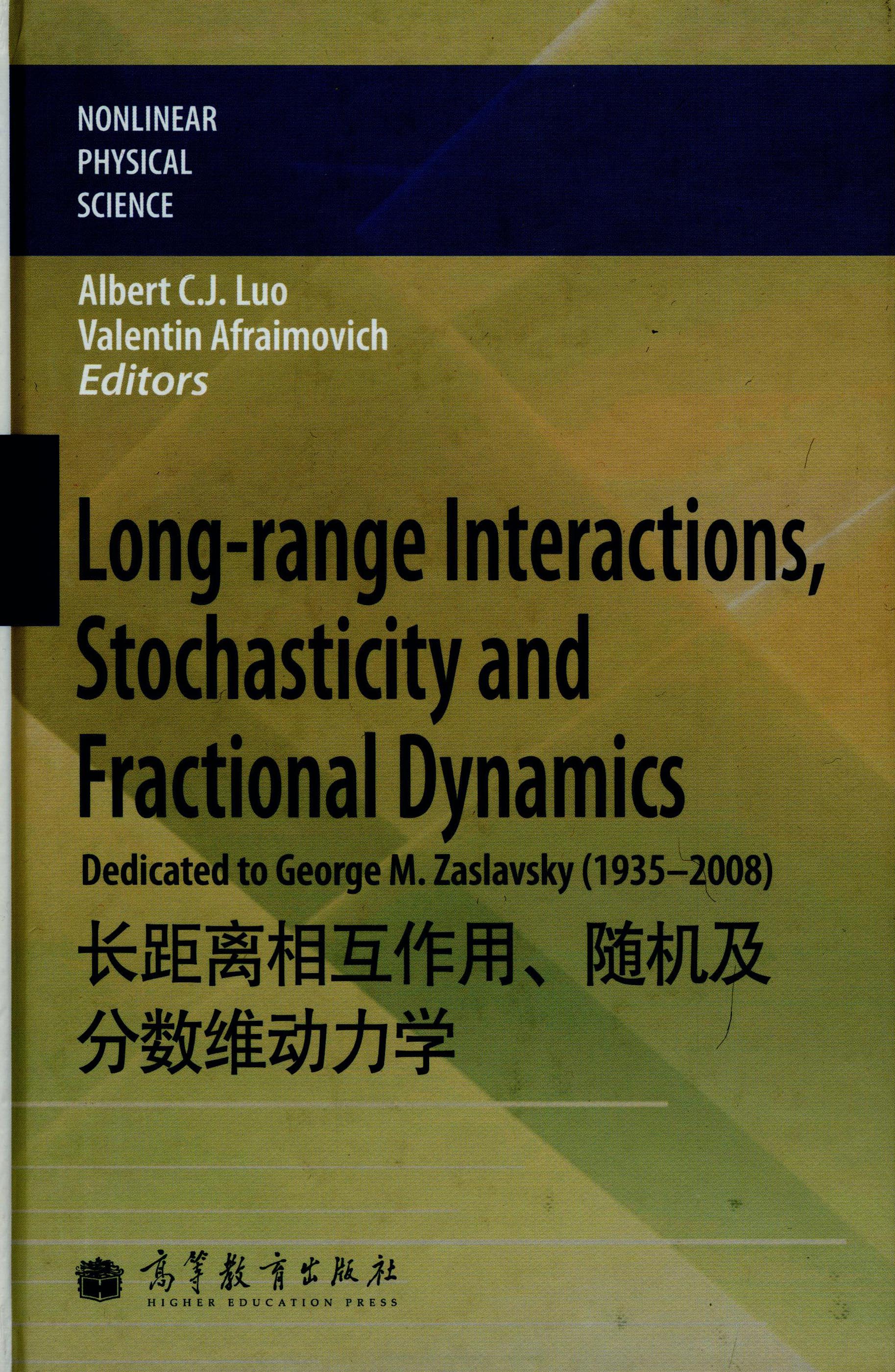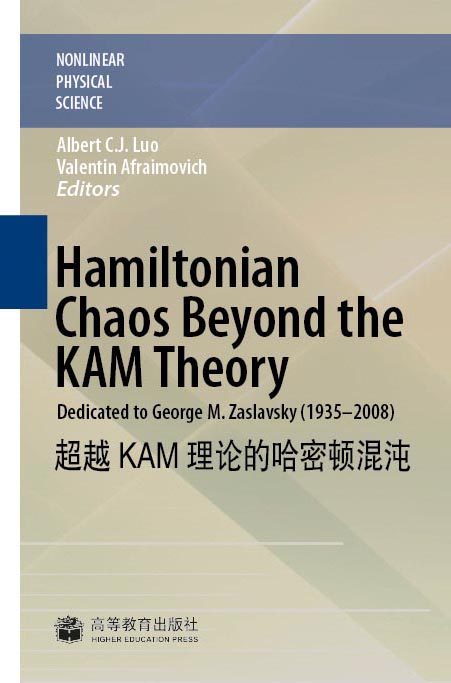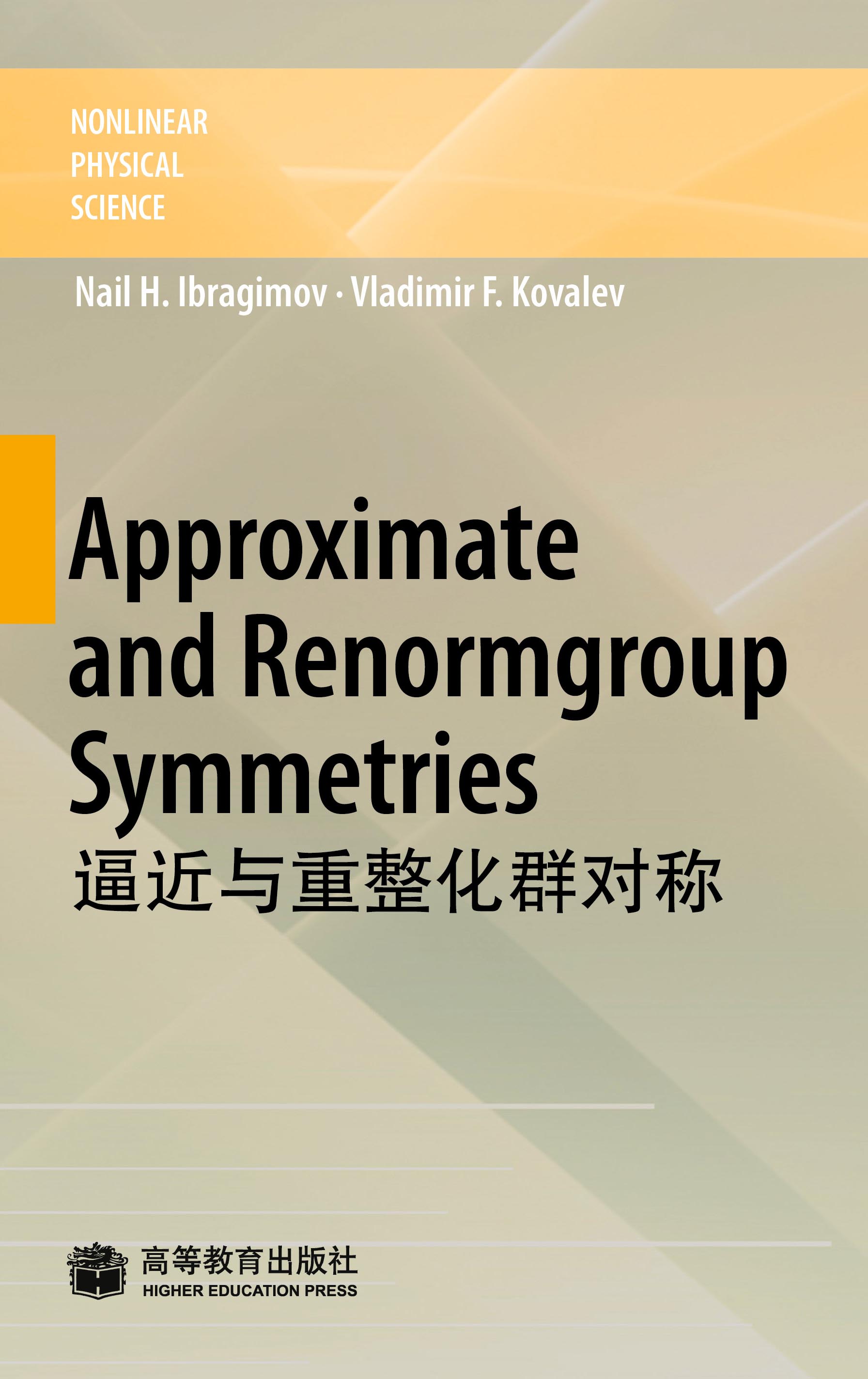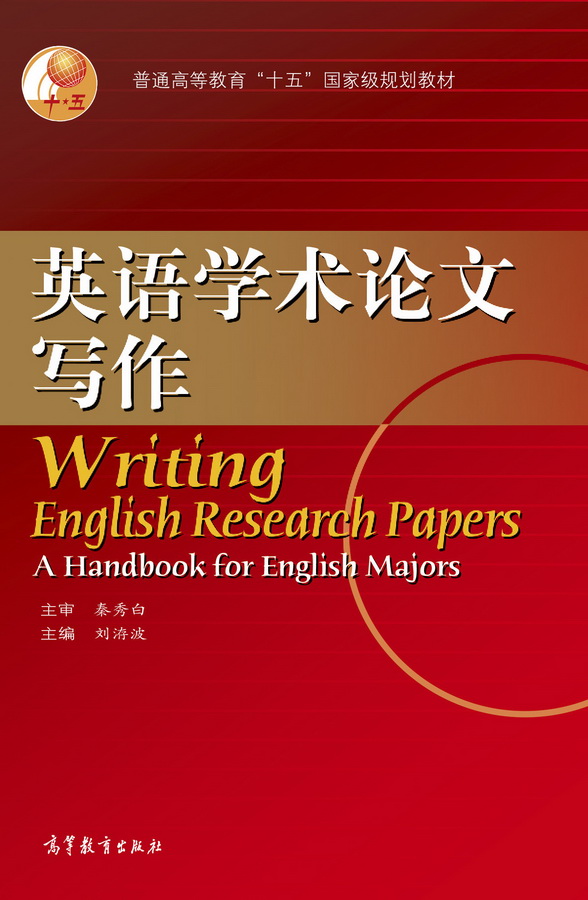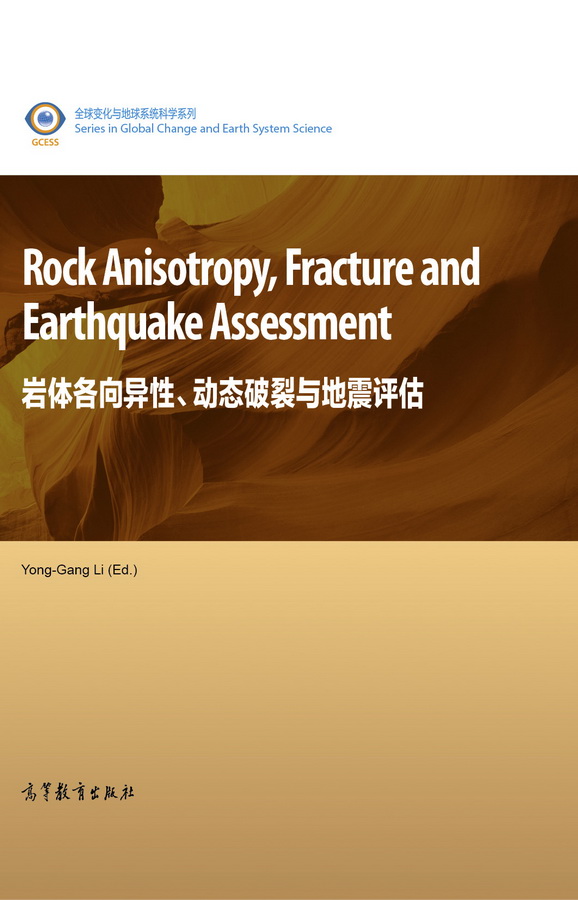微分方程和数学物理问题(英文版)
作者: Nail H.Ibragimov
出版时间:2009-08
出版社:高等教育出版社
- 高等教育出版社
- 9787040276039
- 1版
- 227497
- 48266043-8
- 精装
- 16开
- 2009-08
- 400
- 348
- 理学
- 数学类
- O411.1;O175
- 数学类
- 研究生及以上
A Practical Course in Differential Equations and Mathematical Modelling is a unique blend of the traditional methods of ordinary and partial differential equations with Lie group analysis enriched by the author's own theoretical developments. The book -- which aims to present new mathematical curricula based on symmetry and invariance principles -- is tailored to develop analytic skills and 'working knowledge' in both classical and Lie's methods for solving linear and nonlinear equations. This approach helps to make courses n differential equations, mathematical modelling, distributions and fundamental solution, etc. easy to follow and interesting for students. The book is based on the author's extensive teaching experience at Novosibirsk and Moscow universities in Russia, College de France, Georgia Tech and Stanford University in the United States, universities in South Africa, Cyprus, Turkey, and Blekinge Institute of Technology (BTH) in Sweden. The new curriculum prepares students for solving modern nonlinear problems and will essentially be more appealing to students compared to the traditional way of teaching mathematics. The book can be used as a main textbook by undergraduate and graduate students and university lecturers in applied mathematics, physics and engineering.
前辅文
1 Selected topics from analysis
1.1 Elementary mathematics
1.1.1 Numbers, variables and elementary functions
1.1.2 Quadratic and cubic equations
1.1.3 Areas of similar _gures. Ellipse as an example
1.1.4 Algebraic curves of the second degree
1.2 Di_erential and integral calculus
1.2.1 Rules for di_erentiation
1.2.2 The mean value theorem
1.2.3 Invariance of the di_erential
1.2.4 Rules for integration
1.2.5 The Taylor series
1.2.6 Complex variables
1.2.7 Approximate representation of functions
1.2.8 Jacobian. Functional independence. Change of variables in multiple integrals
1.2.9 Linear independence of functions. Wronskian
1.2.10 Integration by quadrature
1.2.11 Di_erential equations for families of curves
1.3 Vector analysis
1.3.1 Vector algebra
1.3.2 Vector functions
1.3.3 Vector _elds
1.3.4 Three classical integral theorems
1.3.5 The Laplace equation
1.3.6 Di_erentiation of determinants
1.4 Notation of di_erential algebra
1.4.1 Di_erential variables. Total di_erentiation
1.4.2 Higher derivatives of the product and of composite functions
1.4.3 Di_erential functions with several variables
1.4.4 The frame of di_erential equations
1.4.5 Transformation of derivatives
1.5 Variational calculus
1.5.1 Principle of least action
1.5.2 Euler-Lagrange equations with several variables Problems to Chapter 1
2 Mathematical models
2.1 Introduction
2.2 Natural phenomena
2.2.1 Population models
2.2.2 Ecology: Radioactive waste products
2.2.3 Kepler’s laws. Newton’s gravitation law
2.2.4 Free fall of a body near the earth
2.2.5 Meteoroid
2.2.6 A model of rainfall
2.3 Physics and engineering sciences
2.3.1 Newton’s model of cooling
2.3.2 Mechanical vibrations. Pendulum
2.3.3 Collapse of driving shafts
2.3.4 The van der Pol equation
2.3.5 Telegraph equation
2.3.6 Electrodynamics
2.3.7 The Dirac equation
2.3.8 Fluid dynamics
2.3.9 The Navier-Stokes equations
2.3.10 A model of an irrigation system
2.3.11 Magnetohydrodynamics
2.4 Di_usion phenomena
2.4.1 Linear heat equation
2.4.2 Nonlinear heat equation
2.4.3 The Burgers and Korteweg-de Vries equations
2.4.4 Mathematical modelling in _nance
2.5 Biomathematics
2.5.1 Smart mushrooms
2.5.2 A tumour growth model
2.6 Wave phenomena
2.6.1 Small vibrations of a string
2.6.2 Vibrating membrane
2.6.3 Minimal surfaces
2.6.4 Vibrating slender rods and plates
2.6.5 Nonlinear waves
2.6.6 The Chaplygin and Tricomi equations Problems to Chapter 2
3 Ordinary di_erential equations: Traditional approach
3.1 Introduction and elementary methods
3.1.1 Di_erential equations. Initial value problem
3.1.2 Integration of the equation y(n) = f(x)
3.1.3 Homogeneous equations
3.1.4 Di_erent types of homogeneity
3.1.5 Reduction of order
3.1.6 Linearization through di_erentiation
3.2 First-order equations
3.2.1 Separable equations
3.2.2 Exact equations
3.2.3 Integrating factor (A. Clairaut, 1739)
3.2.4 The Riccati equation
3.2.5 The Bernoulli equation
3.2.6 Homogeneous linear equations
3.2.7 Non-homogeneous linear equations. Variation of the parameter
3.3 Second-order linear equations
3.3.1 Homogeneous equation: Superposition
3.3.2 Homogeneous equation: Equivalence properties
3.3.3 Homogeneous equation: Constant coe_cients
3.3.4 Non-homogeneous equation: Variation of parameters
3.3.5 Bessel’s equation and the Bessel functions
3.3.6 Hypergeometric equation
3.4 Higher-order linear equations
3.4.1 Homogeneous equations. Fundamental system
3.4.2 Non-homogeneous equations. Variation of parameters
3.4.3 Equations with constant coe_cients
3.4.4 Euler’s equation
3.5 Systems of _rst-order equations
3.5.1 General properties of systems
3.5.2 First integrals
3.5.3 Linear systems with constant coe_cients
3.5.4 Variation of parameters for systems Problems to Chapter 3
4 First-order partial di_erential equations
4.1 Introduction
4.2 Homogeneous linear equation
4.3 Particular solutions of non-homogeneous equations
4.4 Quasi-linear equations
4.5 Systems of homogeneous equations Problems to Chapter 4
5 Linear partial di_erential equations of the second order
5.1 Equations with several variables
5.1.1 Classi_cation at a _xed point
5.1.2 Adjoint linear di_erential operators
5.2 Classi_cation of equations in two independent variables
5.2.1 Characteristics. Three types of equations
5.2.2 The standard form of the hyperbolic equations
5.2.3 The standard form of the parabolic equations
5.2.4 The standard form of the elliptic equations
5.2.5 Equations of a mixed type
5.2.6 The type of nonlinear equations
5.3 Integration of hyperbolic equations in two variables
5.3.1 d’Alembert’s solution
5.3.2 Equations reducible to the wave equation
5.3.3 Euler’s method
5.3.4 Laplace’s cascade method
5.4 The initial value problem
5.4.1 The wave equation
5.4.2 Non-homogeneous wave equation
5.5 Mixed problem. Separation of variables
5.5.1 Vibration of a string tied at its ends
5.5.2 Mixed problem for the heat equation Problems to Chapter 5
6 Nonlinear ordinary di_erential equations
6.1 Introduction
6.2 Transformation groups
6.2.1 One-parameter groups on the plane
6.2.2 Group generator and the Lie equations
6.2.3 Exponential map
6.2.4 Invariants and invariant equations
6.2.5 Canonical variables
6.3 Symmetries of _rst-order equations
6.3.1 First prolongation of group generators
6.3.2 Symmetry group: de_nition and main property
6.3.3 Equations with a given symmetry
6.4 Integration of _rst-order equations using symmetries
6.4.1 Lie’s integrating factor
6.4.2 Integration using canonical variables
6.4.3 Invariant solutions
6.4.4 General solution provided by invariant solutions
6.5 Second-order equations
6.5.1 Second prolongation of group generators Calculation of symmetries
6.5.2 Lie algebras
6.5.3 Standard forms of two-dimensional Lie algebras
6.5.4 Lie’s integration method
6.5.5 Integration of linear equations with a known particular solution
6.5.6 Lie’s linearization test
6.6 Higher-order equations
6.6.1 Invariant solutions. Derivation of Euler’s ansatz
6.6.2 Integrating factor (N.H. Ibragimov, 2006)
6.6.3 Linearization of third-order equations
6.7 Nonlinear superposition
6.7.1 Introduction
6.7.2 Main theorem on nonlinear superposition
6.7.3 Examples of nonlinear superposition
6.7.4 Integration of systems using nonlinear superposition Problems to Chapter 6
7 Nonlinear partial di_erential equations
7.1 Symmetries
7.1.1 De_nition and calculation of symmetry groups
7.1.2 Group transformations of solutions
7.2 Group invariant solutions
7.2.1 Introduction
7.2.2 The Burgers equation
7.2.3 A nonlinear boundary-value problem
7.2.4 Invariant solutions for an irrigation system
7.2.5 Invariant solutions for a tumour growth model
7.2.6 An example from nonlinear optics
7.3 Invariance and conservation laws
7.3.1 Introduction
7.3.2 Preliminaries
7.3.3 Noether’s theorem
7.3.4 Higher-order Lagrangians
7.3.5 Conservation theorems for ODEs
7.3.6 Generalization of Noether’s theorem
7.3.7 Examples from classical mechanics
7.3.8 Derivation of Einstein’s formula for energy
7.3.9 Conservation laws for the Dirac equations Problems to Chapter 7
8 Generalized functions or distributions
8.1 Introduction of generalized functions
8.1.1 Heuristic considerations
8.1.2 De_nition and examples of distributions
8.1.3 Representations of the _-function as a limit
8.2 Operations with distributions
8.2.1 Multiplication by a function
8.2.2 Di_erentiation
8.2.3 Direct product of distributions
8.2.4 Convolution
9 Invariance principle and fundamental solutions
9.1 Introduction
9.2 The invariance principle
9.2.1 Formulation of the invariance principle
9.2.2 Fundamental solution of linear equations with constant coecients
9.2.3 Application to the Laplace equation
9.2.4 Application to the heat equation
9.3 Cauchy’s problem for the heat equation
9.3.1 Fundamental solution for the Cauchy problem
9.3.2 Derivation of the fundamental solution for the Cauchy problem from the invariance principle
9.3.3 Solution of the Cauchy problem
9.4 Wave equation
9.4.1 Preliminaries on di_erential forms
9.4.2 Auxiliary equations with distributions
9.4.3 Symmetries and de_nition of fundamental solutions for the wave equation
9.4.4 Derivation of the fundamental solution
9.4.5 Solution of the Cauchy problem
9.5 Equations with variable coe_cients
Problems to Chapter 9
Answers
Bibliography
Index


